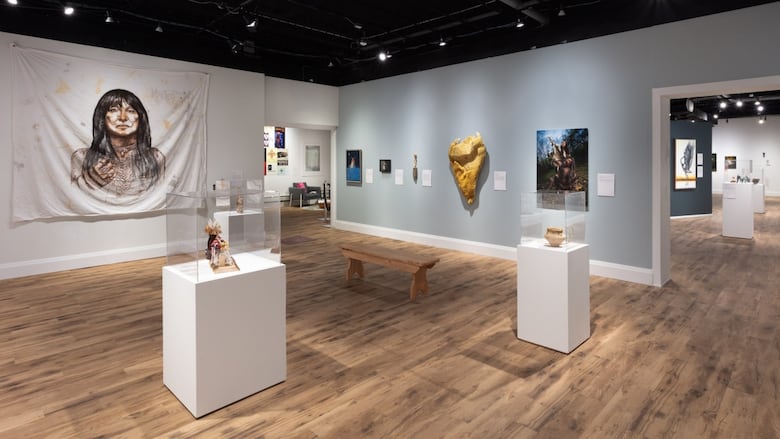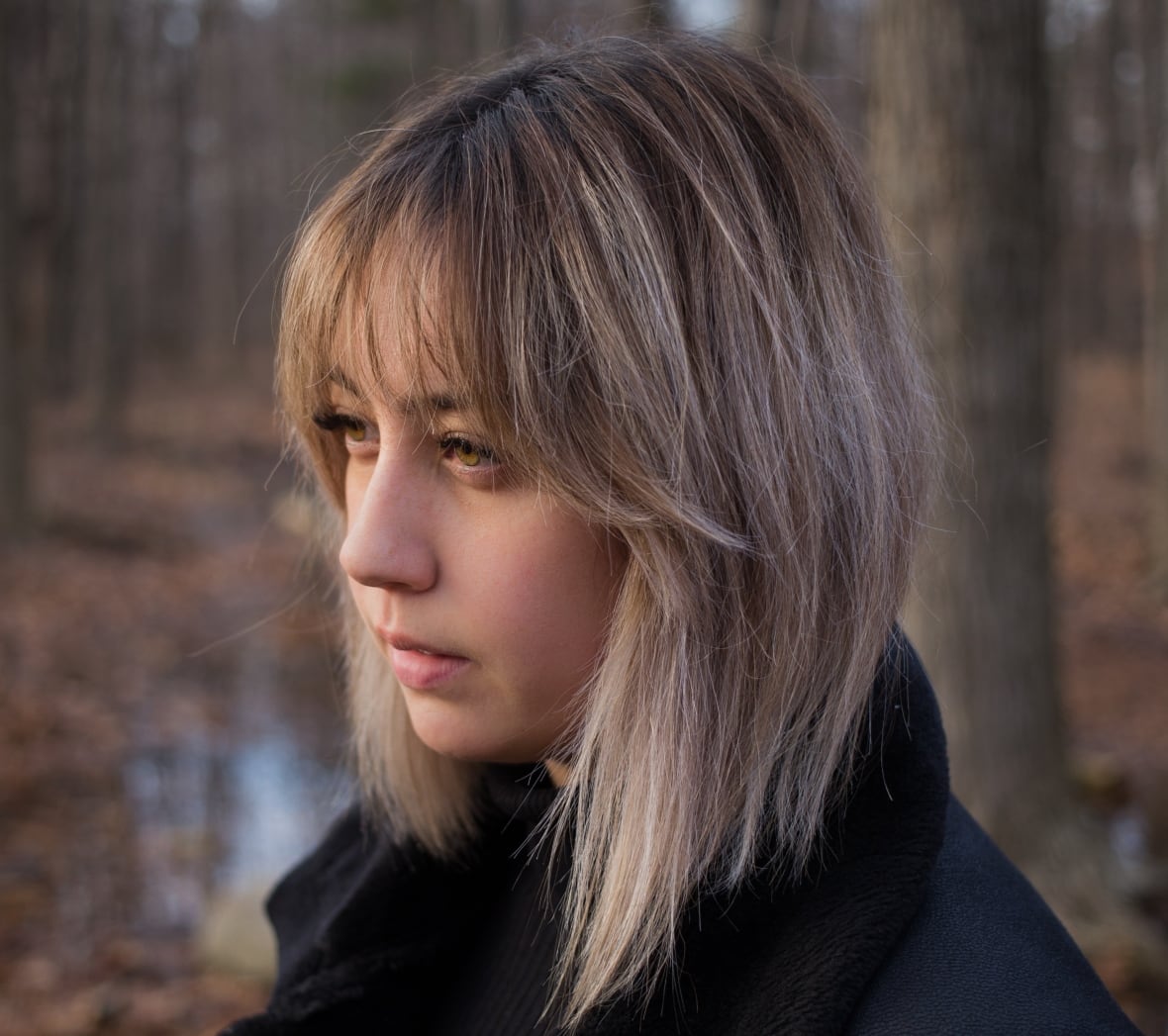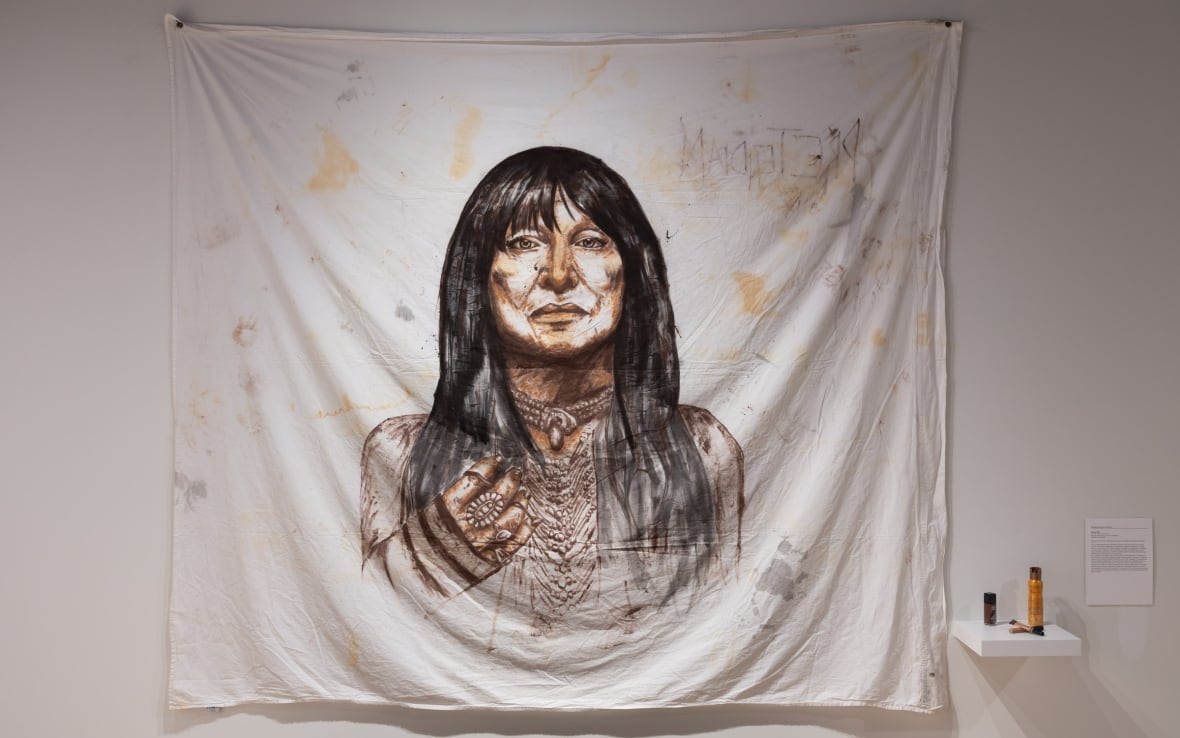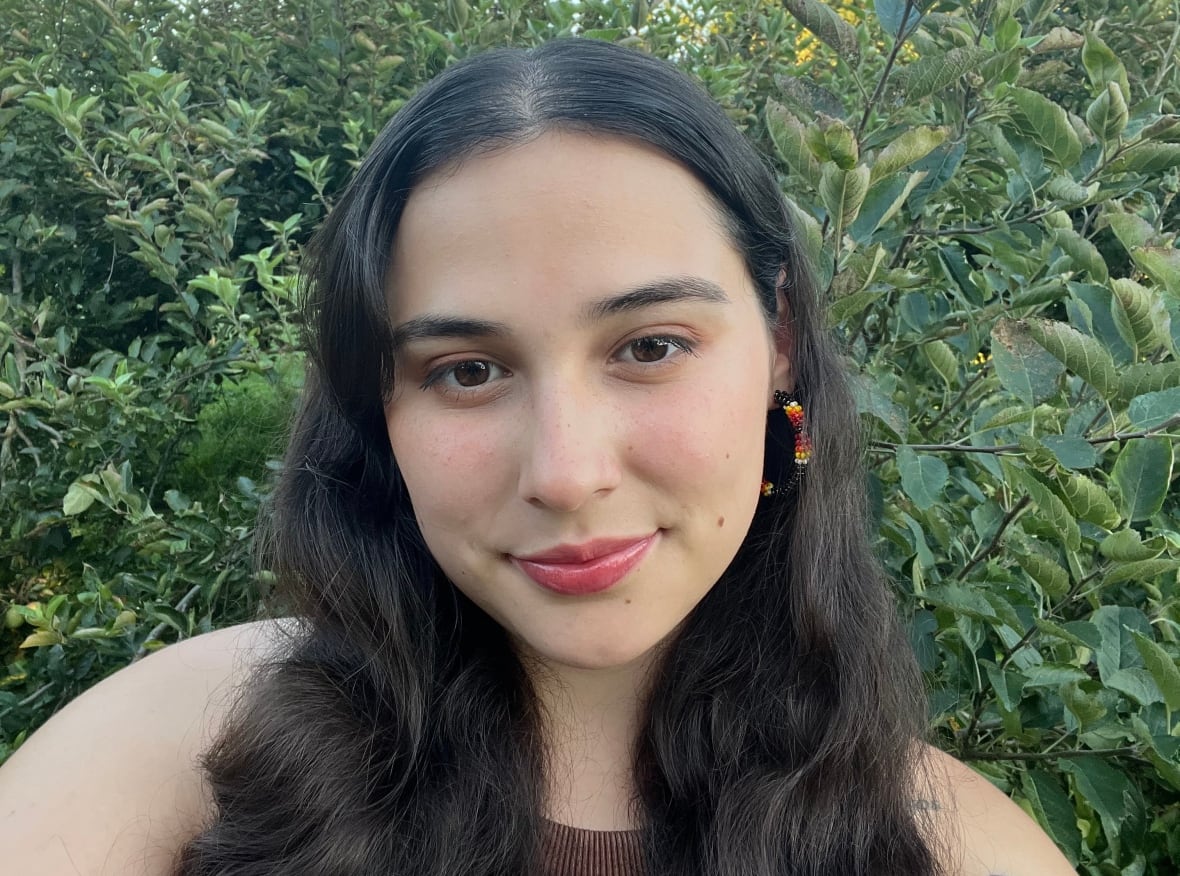Woodland Cultural Centre's Indigenous Art marks 50 years with thought-provoking exhibition
Portrait of Buffy Sainte-Marie stirring reactions, says curator

The Woodland Cultural Centre in Brantford, Ont., is holding its 50th annual Indigenous Art exhibition, celebrating decades of honouring and uplifting Indigenous artists.
The Woodland Cultural Centre is housed in the former Mohawk Institute, a residential school. The space now preserves and promotes Indigenous languages, culture, art and history. It first opened its doors in 1975, five years after the school closed.
The exhibition's guest curator Alex Jacobs-Blum, who is Cayuga on her mother's side from Six Nations of the Grand River, said in a blog post on July 16 it is "a celebration of the artists who brought us here, those who are currently making waves, and the generations yet to come."
Jacobs-Blum said it was difficult to whittle down 200 submissions to just 65 selections with help from a jury made up of community members from Six Nations. Submissions of paintings, beadwork, textiles, sculpture, pottery and traditional Haudenosaunee corn husk dolls were all "absolutely beautiful, breathtaking work," she said.
This year, two awards were established: the Patricia Deadman Award for emerging artists, named in honour of the centre's former curator; and the Thomas B. Hill Legacy Award for established artists.

The Patricia Deadman Award went to Anishinaabe artist Emily Kewageshig of Saugeen First Nation in Ontario for her piece titled Walking Gently. Her painted work on a large circular wooden frame of a woman dancing in moccasins and a figure of a bear in the background is reminiscent of a "cyclical journey and conversation with the land," said Jacobs-Bloom.
The Thomas B. Hill Legacy Award went to Six Nations of the Grand River sculptor David M. General. His piece is a maquette (or model) of a broken bowl, representing the Dish with One Spoon treaty agreement and the responsibilities we all have to the land and each other.
Work stirs 'visceral reaction'
The exhibition includes an image of Buffy Sainte-Marie painted on a queen-size bed sheet.
Jacobs-Blum said she had a "visceral reaction" to the piece when she first saw it.
"At first glance it is like this really well done portrait of Buffy Sainte-Marie but then learning that the portrait is done on a bed sheet and that the material that is used to create the portrait is self-tanner and makeup, it's meant to be like a satirical piece," said Jacobs-Blum.

The portrait, titled Stained, is one of two pieces in the exhibition by emerging artist Genevieve Buchanan.
Buchanan, 22, from Kettle and Stony Point First Nation, said the work and its symbolism was inspired by the research she did and stories she heard after CBC's The Fifth Estate investigated Sainte-Marie's claims of Indigenous ancestry.
Buchanan said the first concert that her mom took her to in London, Ont., back in 2013, was to see Buffy Sainte-Marie perform.
"I wanted to process these emotions and the controversies around it because there's people who still absolutely adore her and admire her and there are people who feel betrayed. And I wanted to work through this," said Buchanan.
The word 'Pretendian' is written on the back of the bed sheet, seeping through so that it's visible from the front.

The artist said people have had different interpretations of the media she used.
"Some people brought up the term being 'born on the wrong side of the blanket,'" Buchanan said, referencing comments Sainte-Marie made on social media in 2023.
"That's the beauty of art, right? Everyone has all these different interpretations."
Ultimately the piece is a "metaphor for the bigger cultural thing happening," she said, because "makeup is often used to cover things up and to hide things and to disguise things and to hide the blemishes and such."
Processing emotions through art
The exhibition is displayed according to eight different themes. Stained is on display in the museum's smaller gallery themed The Good Mind and In the Wake of Extraction.
Jacobs-Blum said you encounter the portrait immediately as you exit the first gallery.
"That piece kind of like sitting in that one theme of The Wake of Extraction, thinking about extractiveness and in terms of identity and there were other pieces that also kind of spoke to the extractiveness of land," she said.
Jacobs-Blum said many people are still processing their feelings about Sainte-Marie.
"There are still some people [who] are trying to separate the person from the art," she said.
"And they're like, well, we still really love her music. And then the heartbreak, too, at the same time."
Jacobs-Blum said people who first toured the exhibition were shocked at what initially appeared to be a shrine to the singer-songwriter. She said she spent a lot of time explaining the nuances of the work and the artist's intention.
She's mindful of how art is placed within an exhibition and said that while curating it, she thinks about patrons who are viewing the work, particularly Indigenous people who are at the forefront of her practice.
She said it's about "holding that space for the grief, but also that deep love and care that we have for each other."
"As art makers, we're navigating these difficult things that have maybe happened in our lives, processing it through artistic practice."
The exhibition runs until Sept. 30.

